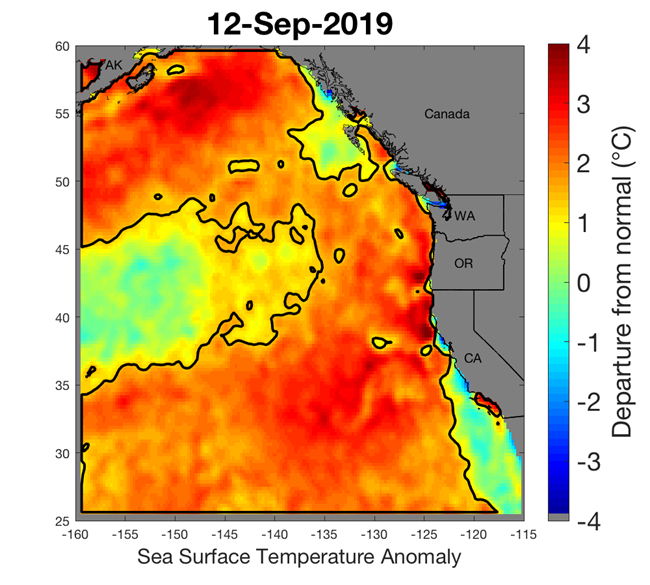Last updated: October 1, 2019
Article
Five Years After “the Blob,” Scientists Monitor Emergence of Another Marine Heatwave

NOAA
September 2019 - In 2014–2015, the marine heatwave nicknamed “the Blob” was in full force. Ocean surface temperatures rose almost seven degrees Fahrenheit above average, leading to all kinds of impacts along the West Coast. The largest harmful algae bloom on record sickened marine mammals and shut down crab fisheries; species distributions shifted; seabirds and young California sea lions, unable to find fish to eat, washed up dead or turned up starving on beaches; and juvenile salmon suffered from a lack of food along the coast upon migrating out to sea from their freshwater nurseries. Now, only five years later, NOAA scientists are tracking another significant marine heatwave that looks similar to the early stages of the Blob.
Thus far, the new heatwave, which started spreading throughout the Northeast Pacific in June, has no catchy name. It is simply being called the Northeast Pacific Marine Heatwave of 2019. Since it is fairly new, the warmer water at the surface does not yet extend to the depths that it did during the height of the Blob, which persisted for nearly two years. That means it is still possible that it could dissipate with the help of some strong winds. However, if the pressure system that has recently been slowing the winds along the coast remains in place, the continued lack of wind will keep the warm surface waters from mixing with cooler water from upwelling along the coast, the upwelling itself will slow, and the heatwave would get worse.
Either way, in the wake of the Blob, NOAA is conducting extra monitoring and research to help understand and predict the formation and behavior of marine heatwaves like this one, and to help coastal communities anticipate their impacts. From there, the challenge for coastal resource managers and communities becomes figuring out how to help mitigate those impacts.
Learn more from NOAA’s news story, or check out this recent article on the new marine heatwave in Bay Nature.
